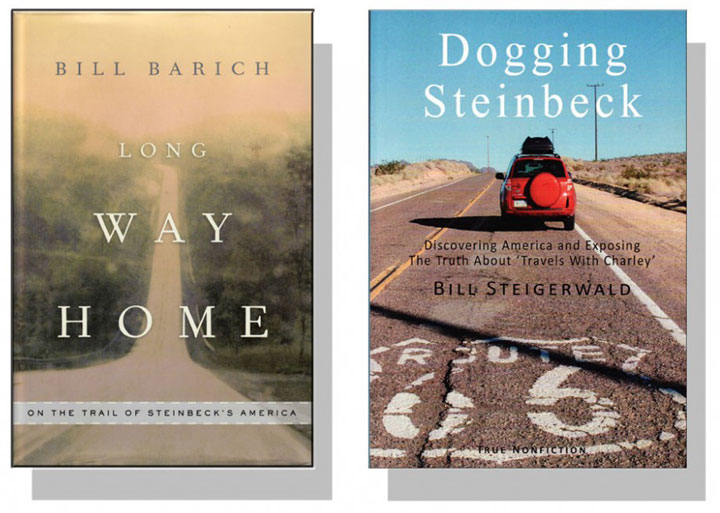Shortly before John Steinbeck flew from the United States to Sweden to accept the Nobel Prize in Literature on December 10, 1962, Anders Österling, the permanent secretary of the Swedish Academy, synopsized the enduring works of fiction that motivated the academy’s decision to award Steinbeck the Nobel Prize. Österling said this about Steinbeck’s Travels With Charley in Search of America, published the same year:
Steinbeck’s latest book is an account of his experiences during a three-month tour of forty American states, Travels with Charley . . . . He travelled in a small truck equipped with a cabin where he slept and kept his stores. He travelled incognito, his only companion being a black poodle. We see here what a very experienced observer and raisonneur he is. In a series of admirable explorations into local colour, he rediscovers his country and its people. In its informal way this book is also a forceful criticism of society. The traveller in Rosinante – the name [John Steinbeck] gave his truck – shows a slight tendency to praise the old at the expense of the new, even though it is quite obvious that he is on guard against the temptation. “I wonder why progress so often looks like destruction,” he says in one place when he sees the bulldozers flattening out the verdant forest of Seattle to make room for the feverishly expanding residential areas and the skyscrapers. It is, in any case, a most topical reflection, valid also outside America.
The Facts and the Friction About Travels with Charley
Fifty years later, my research revealed evidence that many of the events recounted in Steinbeck’s fall 1960 driving tour of the United States were embellished, contrived, or invented. Like readers and reviewers at the time, however, the Nobel Prize committee had little reason to doubt the literal truth of where, when, and how Steinbeck traveled; who (other than Charley) sometimes sat, conversing in non-canine, in the seat next to him; and who he encountered in fact, not imagination, during the road trip he took to reconnect with the United States after his and his wife Elaine’s recent return from England. As I show in my book Dogging Steinbeck, John Steinbeck did a lot of fictionalizing in Travels with Charley. Viking Press worked hard to create the convenient myth that he traveled alone, traveled rough, and traveled slowly. This legend lives on in hallowed academe, where adjustments to what the anointed call the John Steinbeck “canon” are slower than change at the Vatican, and books not written by the tenured Steinbeck priesthood are met with denial, silence, or anathema.
Why John Steinbeck’s Writing About Marginalized Misfits In the United States Deserved the Nobel Prize Anyway
Could the 1962 Nobel Prize decision have gone the other way if the truth about Travels with Charley were known then? I doubt it. John Steinbeck won the Nobel Prize for novels and stories dramatizing daily life among marginalized people in the United States written decades before Travels with Charley. Did he deserve the award? If anything, it was overdue, and he didn’t have long to live. His modest Nobel Prize acceptance speech appealed from his failing heart to the world’s conscience at a time when totalitarian repression and Cold War conflict appeared to Steinbeck to threaten the survival of the human species and the individual’s freedom to live, think, and create. But Travels with Charley, a bestseller, was among the top nonfiction books of 1962, and it continues to sell well, occupy Steinbeck scholars, and appeal to non-academic readers throughout the United States and abroad. The inconvenient truth is that it belongs in the fiction section of the John Steinbeck shelf. The creaky Steinbeck canon could use an honest overhaul, and Steinbeck lovers everywhere deserve truth in advertising.
Learn more about the results of Bill Steigerwald’s investigative reporting, and Bill Barich’s book about Travels with Charley (also shown in photo), by reading “Shades of Partial Truth in Travels with Charley“ at SteinbeckNow.com.


